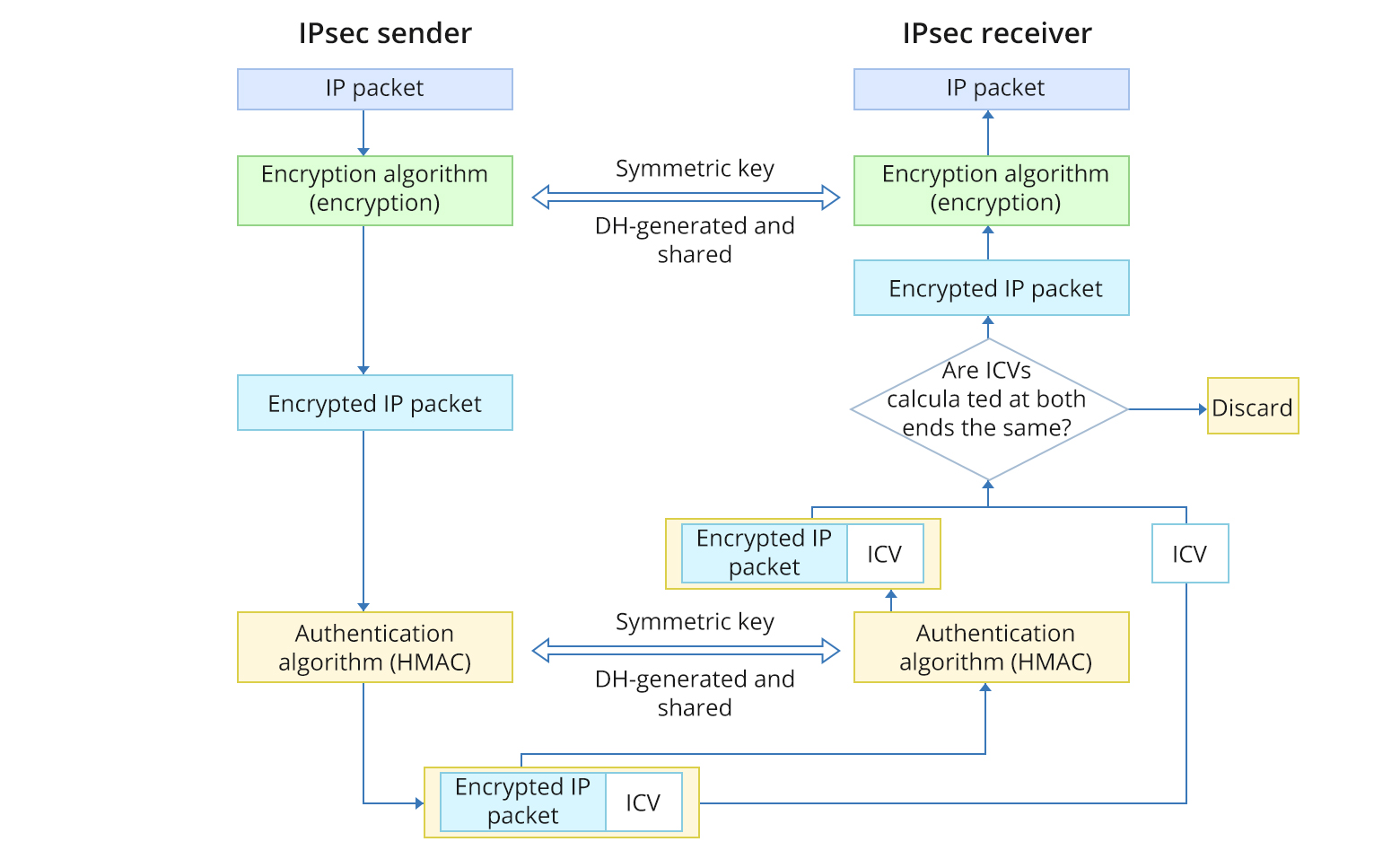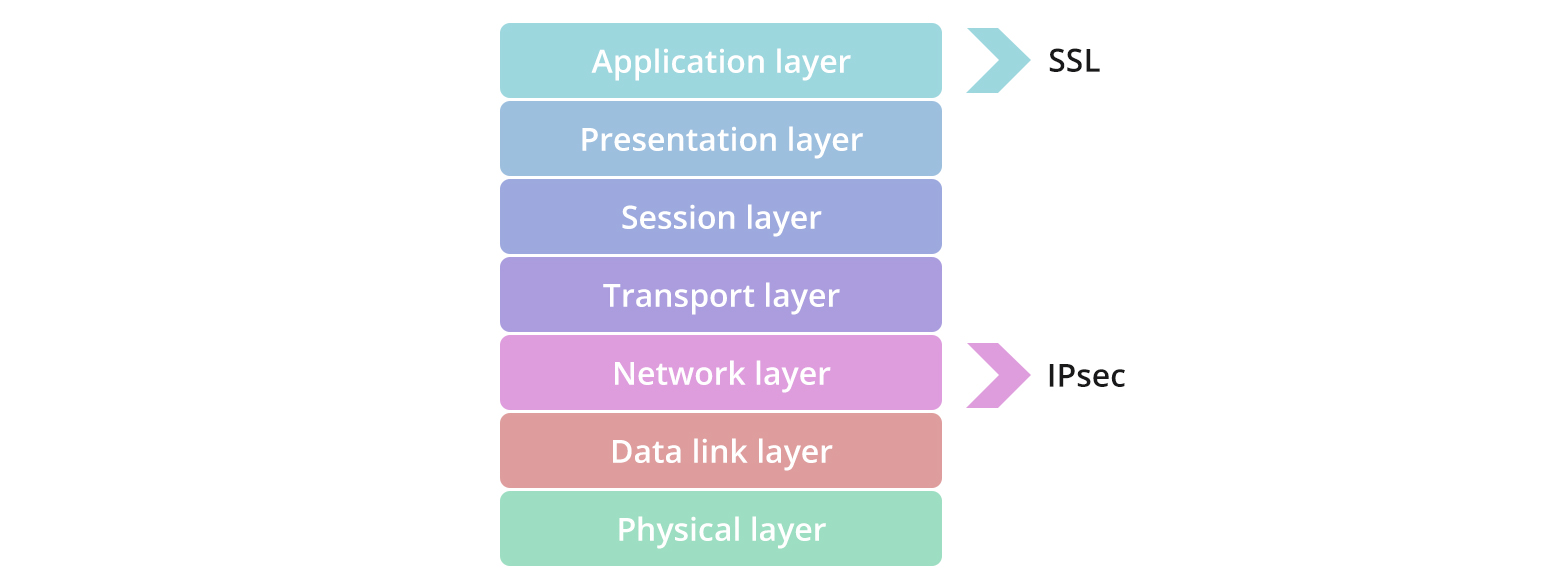IPsec
What Is IPsec?
IPsec (Internet Protocol Security) is a suite of protocols and services designed to enhance the security of IP networks, widely employed as a virtual private network (VPN) technology. Due to the lack of effective security mechanisms in IP packets, they are susceptible to threats such as forgery, eavesdropping, or tampering, especially when transmitted over public networks like the Internet. To address this issue, communicating parties establish an IPsec tunnel to enable encrypted transmission of IP packets. This ensures a secure transfer of IP packets over insecure networks, such as the Internet.
What Is an IPsec VPN?
A Virtual Private Network (VPN) is a technology that creates a private network within a public network, typically the Internet. It establishes a logical network over the public infrastructure, enabling the transmission of user data through a virtual link. This differs from traditional private networks, where user data travels through an end-to-end physical connection.
Various VPN protocols are utilized, including IPsec, Secure Sockets Layer (SSL), Generic Routing Encapsulation (GRE), Point-to-Point Tunneling Protocol (PPTP), and Layer 2 Tunneling Protocol (L2TP). IPsec, widely applied in diverse network access scenarios, is a prevalent VPN technology.
IPsec VPN, a specific implementation of IPsec for remote access, facilitates the establishment of secure tunnels between private networks over a public network. It employs encryption and authentication algorithms to guarantee the security of VPN connections.
IPsec VPN protects point-to-point communication by creating secure tunnels between hosts, hosts and network security gateways, or between network security gateways like routers and firewalls. Operating at the IP layer, it encrypts and authenticates data packets.
In comparison to other VPN technologies, IPsec VPN offers enhanced security as data is encrypted within IPsec tunnels. However, the configuration and networking deployment of IPsec VPN are more intricate.
How Does IPsec Work?
IPsec operates through four distinct phases:
-
1. Traffic Identification:
-
Upon receiving a packet, a network device scrutinizes the 5-tuple of the packet against the configured IPsec policy. This process determines whether the packet should traverse an IPsec tunnel, designating the pertinent traffic as "interested traffic."
-
2. Security Association (SA) Negotiation:
-
SA outlines the parameters for secure data transmission between communicating parties, encompassing security protocols, data encapsulation modes, encryption and authentication algorithms, and keys for data transmission. Once interested traffic is identified, the local network device initiates SA negotiation with the peer network device. The Internet Key Exchange (IKE) protocol is employed in this phase to establish IKE SAs for identity authentication and key information exchange. Subsequently, IPsec SAs are established for secure data transmission based on the IKE SAs.
-
3. Data Transmission:
-
With IPsec SAs in place, communicating parties can transmit data securely over the IPsec tunnel. To ensure data transmission security, Authentication Header (AH) or Encapsulating Security Payload (ESP) is utilized for data encryption and authentication. Encryption safeguards data confidentiality, preventing interception during transmission, while authentication ensures data integrity and reliability, protecting against forgery or tampering.
-
In the depicted process, the IPsec sender encrypts an IP packet using the encryption algorithm and key, encapsulating the original data. Both sender and receiver employ the same authentication algorithm and key to process the encrypted packets, producing an integrity check value (ICV). Matching ICVs at both ends signify an untampered packet, allowing the receiver to decrypt it. Differing ICVs lead to packet discard.
-

IPsec encryption and authentication process
-
4. Tunnel Teardown:
-
Typically, the conclusion of data exchange between two communicating parties triggers session aging, indicating the completion of communication. To optimize system resources, the tunnel between the parties is automatically dismantled upon reaching the idle timeout period.
What Are the 3 Protocols in IPsec?
The Internet Protocol Security (IPsec) suite comprises three key protocols:
Internet Key Exchange (IKE):
IKE, operating at the application layer and based on UDP, plays a crucial role in Security Association (SA) negotiation and key management. There are two versions of IKE: IKEv1 and IKEv2. IKEv2 addresses recognized cryptographic vulnerabilities, enhances security performance, simplifies SA negotiation, and improves efficiency compared to IKEv1. IKE combines the Internet Security Association and Key Management Protocol (ISAKMP) with Oakley and SKEME. ISAKMP defines the IKE SA establishment process, while Oakley and SKEME utilize the Diffie-Hellman (DH) algorithm for secure key distribution and identity authentication in internet communication.
Authentication Header (AH):
AH serves the purpose of authenticating the data source and verifying the integrity of IP packets. It ensures the trustworthiness of the IP packet source and guards against data tampering. Notably, AH does not provide encryption. An AH header is added to each data packet following the standard IP header, verifying the integrity of the entire IP packet.
Encapsulating Security Payload (ESP):
ESP, in addition to authenticating the data source and ensuring IP packet integrity, has the capability to encrypt data. An ESP header is appended to the standard IP header in each data packet, accompanied by ESP Trailer and ESP Auth data fields. In transport mode, ESP does not validate the integrity of IP headers, meaning it cannot guarantee the non-tampering of IP headers.
AH and ESP can be employed independently or in conjunction. When used together, ESP encapsulation precedes AH encapsulation, and AH decapsulation precedes ESP decapsulation. This allows for a comprehensive approach to securing data transmission in the context of IPsec.
IPsec VPN vs SSL VPN
IPsec and SSL are two prevalent VPN technologies, each offering encryption and authentication for secure remote access. A comparison of IPsec VPN and SSL VPN reveals distinctions in their working layers, configuration and deployment, security, and access control:
Working Layers of the OSI Reference Model:
- IPsec operates at the network layer, directly over the Internet Protocol (IP).
- SSL functions at the application layer, serving as an application-layer protocol that encrypts HTTP traffic rather than IP packets.

Working layers of IPsec and SSL
Configuration and Deployment:
- IPsec VPN is designed for site-to-site networking, requiring VPN gateways at each site or dedicated VPN clients for remote users. This leads to complex configuration and deployment, accompanied by high maintenance costs.
- SSL VPN is suitable for client-to-site networking, where remote users only need to install a specific plug-in on a standard SSL-supporting browser. A VPN gateway is centrally deployed in a data center, simplifying configuration and deployment, resulting in lower maintenance costs.
Security:
- IPsec, functioning at the network layer, secures all data transmitted between sites. Remote users accessing IPsec VPNs must install dedicated VPN clients or deploy VPN gateways, allowing for user access verification based on authentication rules, security policy rules, or content security filtering. This makes IPsec VPNs more secure.
- SSL VPN, not requiring dedicated clients or gateways at access sites, is more susceptible to security threats.
Access Control:
- IPsec, working at the network layer, lacks the capability for fine-grained access control based on applications.
- SSL VPN, being more flexible, allows for fine-grained access control. Network administrators can categorize network resources by application types, each with different access permissions.
You might be interested in
Email Address

-
PoE vs PoE+ vs PoE++ Switch: How to Choose?
Mar 16, 2023








